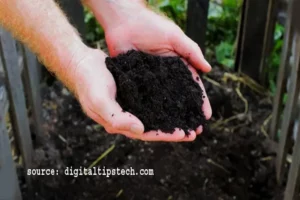How to Make Your Own Fertilizer: A Gardening Expert’s Guide
How to make your own fertilizer? Gardening is a rewarding and fulfilling hobby that allows you to connect with nature and nurture the growth of beautiful plants. One key aspect of successful gardening is providing your plants with the nutrients they need to thrive. While commercial fertilizers are widely available, creating your own fertilizer can be a sustainable and cost-effective solution. In this guide, we’ll delve into the art of making your own fertilizer, ensuring your plants receive the nourishment they deserve.

As a gardening enthusiast, you’re likely aware of the importance of proper plant nutrition. Fertilizers play a vital role in supplying essential nutrients to plants, promoting healthy growth, vibrant blooms, and bountiful yields. Making your own fertilizer not only allows you to tailor the nutrient content to your plants’ specific needs but also contributes to reducing waste and environmental impact.
Understanding Plant Nutrients
Plants require a balance of three primary nutrients for optimal growth: nitrogen, phosphorus, and potassium. These nutrients, often referred to as NPK, support different aspects of plant development. Nitrogen encourages leafy green growth, phosphorus aids in root development and flower formation, while potassium enhances overall plant health and disease resistance.
Benefits of Homemade Fertilizers
Personalization: Homemade fertilizers can be customized to suit the requirements of different plant varieties in your garden.
Cost-Effectiveness: Many ingredients for homemade fertilizers are readily available at home, saving you money in the long run.
Environmental Friendliness: Creating your own fertilizers reduces reliance on chemical-laden commercial options and minimizes environmental pollution.
Soil Health: Homemade fertilizers can improve soil structure and microbial activity over time.
Types of Homemade Fertilizers
Nitrogen-Rich Fertilizers
Materials like coffee grounds, grass clippings, and kitchen vegetable scraps are excellent sources of nitrogen. These materials contribute to robust vegetative growth.
Phosphorus-Rich Fertilizers
Bone meal, eggshells, and fruit scraps are high in phosphorus, vital for root development and flowering. Incorporating these ingredients enriches the soil’s phosphorus content.
Potassium-Rich Fertilizers
Banana peels, wood ash, and kelp are rich in potassium. Potassium supports water regulation and overall plant vigor.
Organic Matter-Based Fertilizers
Composting kitchen waste, leaves, and yard debris creates nutrient-rich organic matter that enhances soil fertility and structure.
Gathering Ingredients for Your Fertilizer
Before you start making your fertilizer, gather the necessary ingredients. This might include kitchen scraps, coffee grounds, eggshells, and other organic materials.
Homemade Fertilizer Recipes
Recipe 1: All-Purpose Liquid Fertilizer
Combine a gallon of water with a tablespoon of Epsom salt, a teaspoon of baking powder, and a crushed banana peel. Let it sit for a day before using.
Recipe 2: Nutrient-Rich Banana Peel Fertilizer
Blend banana peels with water to create a nutrient-packed liquid fertilizer. Filter the mixture and weaken it before using.
Recipe 3: Epsom Salt Boosted Fertilizer
Combine a gallon of water with a tablespoon of Epsom salt, allowing the salt to dissolve. This magnesium-rich solution can promote flowering and fruiting.
Application of Homemade Fertilizers
Apply your homemade fertilizers sparingly to avoid over-fertilization, which can harm plants. Dilute liquid fertilizers and spread solid fertilizers evenly across the soil surface.
Avoiding Common Mistakes
Imbalanced Nutrients: Ensure a proper balance of nitrogen, phosphorus, and potassium.
Overuse: Excessive fertilizer application can lead to burns and nutrient runoff.
Lack of Composting: Allow organic materials to decompose before use to prevent nitrogen depletion.
Which fertilizer is best for flowers?
The best fertilizer for flowers depends on various factors, including the type of flowers you are growing, the soil conditions, and the specific nutrients your plants need. In general, a balanced fertilizer with a ratio of N-P-K (nitrogen, phosphorus, and potassium) like 10-10-10 or 20-20-20 is a good choice for most flowering plants.

Nitrogen promotes leafy growth and vibrant green foliage. Adequate levels of phosphorus are necessary for the growth of roots and the production of flowers. Potassium plays a crucial role in promoting the overall well-being of plants, enhancing their ability to fend off diseases, and increasing their resilience to stressful conditions.
It’s also worth considering slow-release fertilizers or organic options, as they can provide a steady supply of nutrients to your flowers over time and improve the soil’s long-term health.
Before applying any fertilizer, it’s a good idea to perform a soil test to determine the specific nutrient needs of your flower garden. This will help you choose the right fertilizer and avoid over- or under-fertilization, which could harm your plants.
FAQs:
Can I use only homemade fertilizers for all my plants?
While homemade fertilizers are beneficial, a mix of commercial and homemade options might provide comprehensive nutrition.
Is there a risk of nutrient imbalances with homemade fertilizers?
Yes, that’s why it’s important to understand the nutrient content of your ingredients and follow balanced recipes.
How frequently should I apply homemade liquid fertilizer?
Apply liquid fertilizers every two to four weeks during the growing season, adjusting based on plant response.
Can I store leftover homemade fertilizer?
It’s best to prepare small batches as needed to maintain the freshness and efficacy of the fertilizer.
Is there any plant-specific homemade fertilizer?
Different plants have varying nutrient requirements, so research which ingredients suit each plant’s needs.
Final Thought:
Get ready to embark on a journey of sustainable gardening by creating your own fertilizers. By following these guidelines and experimenting with different recipes, you’ll witness healthier and more vibrant plants that showcase the power of your homemade fertilizer concoctions.